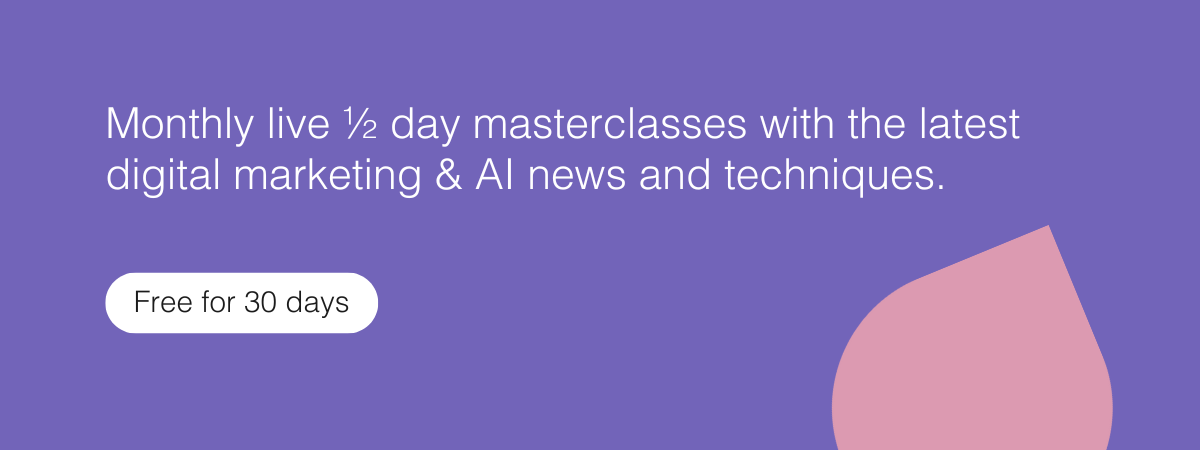AI Prompts to for Search Engine Optimisation (SEO)
Step‑by‑step prompt frameworks for SEO, including why it works, a ready‑to‑copy prompt, and what to measure next:
Search Intent Alignment and SEO Refresh
Brand Voice, Accessibility and Persona Rewrite
This is the latest in a series of AI prompt posts detailing advanced prompt techniques for common digital marketing activities. You can simply cut and paste the prompts highlighted below and replace the text [in brackets like this] to give the prompt your context. However, if you want to get more from the prompts, check out the 'Why this works" bullets to try and understand the particular techniques at play, and how you might apply these to your future prompts. We've also provided the "What to measure" section so that you can measure the impact of prompts output, and see how it improve your existing content.
Editorial Refresh Sprint
Description:
A structured SEO edit that audits content for clarity, alignment with search intent, and conversion impact.
Why this works:
- Uses an audit rubric to score weaknesses
- Produces conservative and transformative rewrites for testing
- Integrates accessibility and inclusion to maximise reach
Copy-and-paste prompt:
What to measure next:
- Form conversion rate.
- Scroll depth and dwell time.
- Keyword ranking improvements.
- Accessibility compliance rate
Search Intent Alignment and SEO Refresh
Description:
Ensures that content matches what users are searching for while still aligning with brand narrative.
Why this works:
- Builds explicit intent hypotheses (informational, commercial, transactional)
- Maps topical entities and FAQs to cover completeness
- Produces dual outlines: search-first vs story-first
Copy-and-paste prompt:
What to measure next:
- Keyword rank and snippet capture
- Organic CTR and bounce rate
- Internal link CTR to sales pages
Brand Voice, Accessibility and Persona Rewrite
Description:
Rewrites accurate but off-brand or inaccessible content, aligning with voice and inclusivity.
Why this works:
- Extracts a voice guide from samples
- Uses role-play critiques to highlight objections
- Produces two rewrites: brand-true and persona-tuned
Copy-and-paste prompt:
What to measure next:
- Readability score and time on page
- Segment-based CTR
- Brand language compliance across content
Competitor Gap and Differentiation Builder
Description:
Finds weaknesses in competitor content and creates a unique stance for differentiation.
Why this works:
- Creates side-by-side competitor comparisons
- Labels gaps as table-stakes, differentiators or thought-leadership
- Suggests original data or assets to strengthen proof
Copy-and-paste prompt:
What to measure next:
- Assisted conversions
- Earned backlinks from new data
- Engagement with proof assets
Content Atomiser and Refresh Calendar
Description:
Transforms one long-form asset into multiple channel-specific derivatives with testing baked in.
Why this works:
- Refactors for scanability and clarity
- Produces Control vs Challenger versions for each derivative
- Sets up an 8-week refresh calendar with UTMs
Copy-and-paste prompt:
What to measure next:
- Assisted pipeline from derivatives
- UTM CTR by channel
- Video completion rates and post-view conversions
